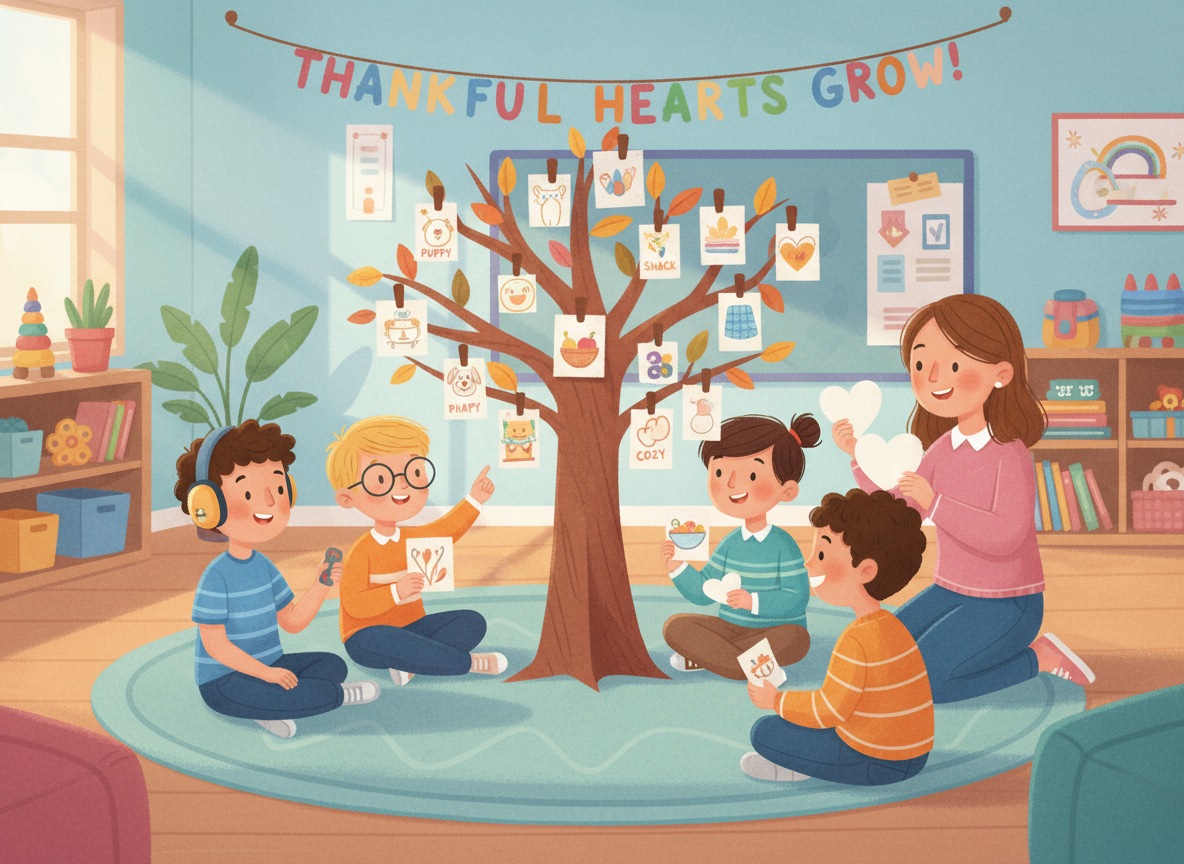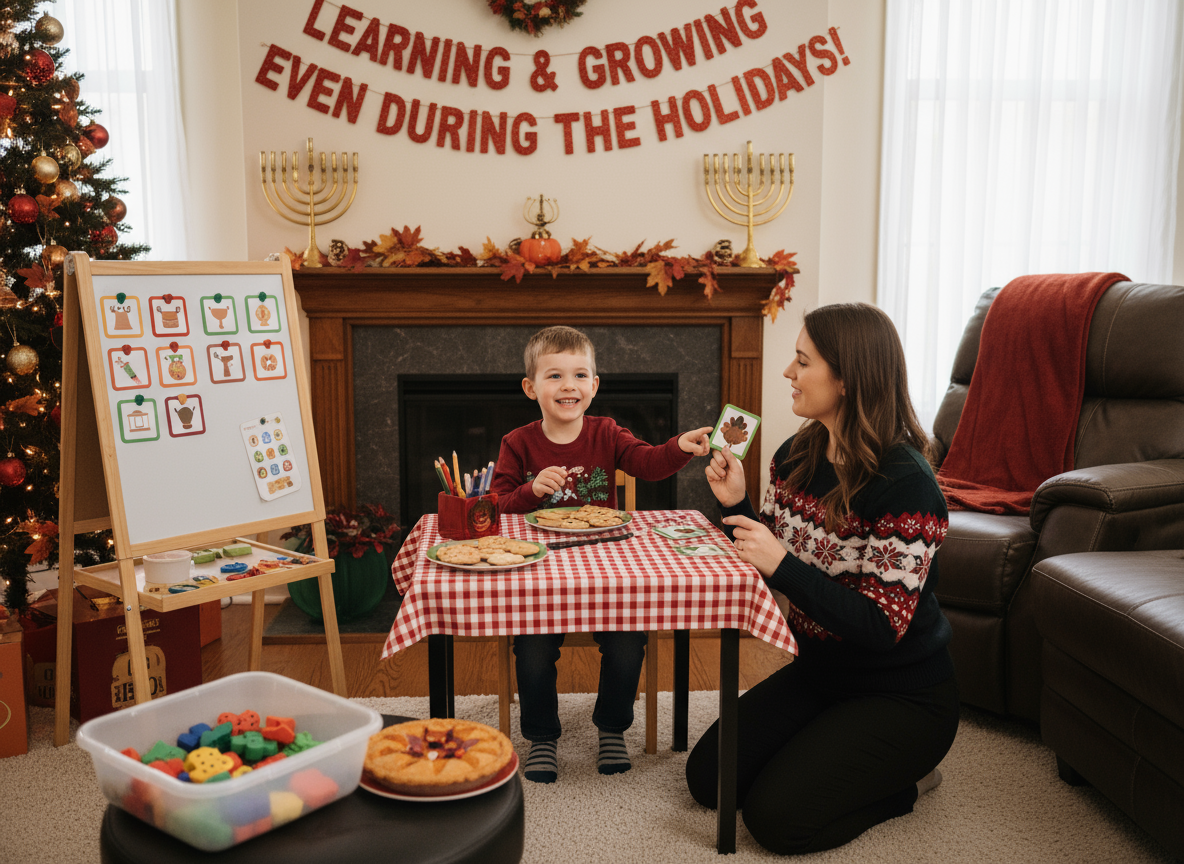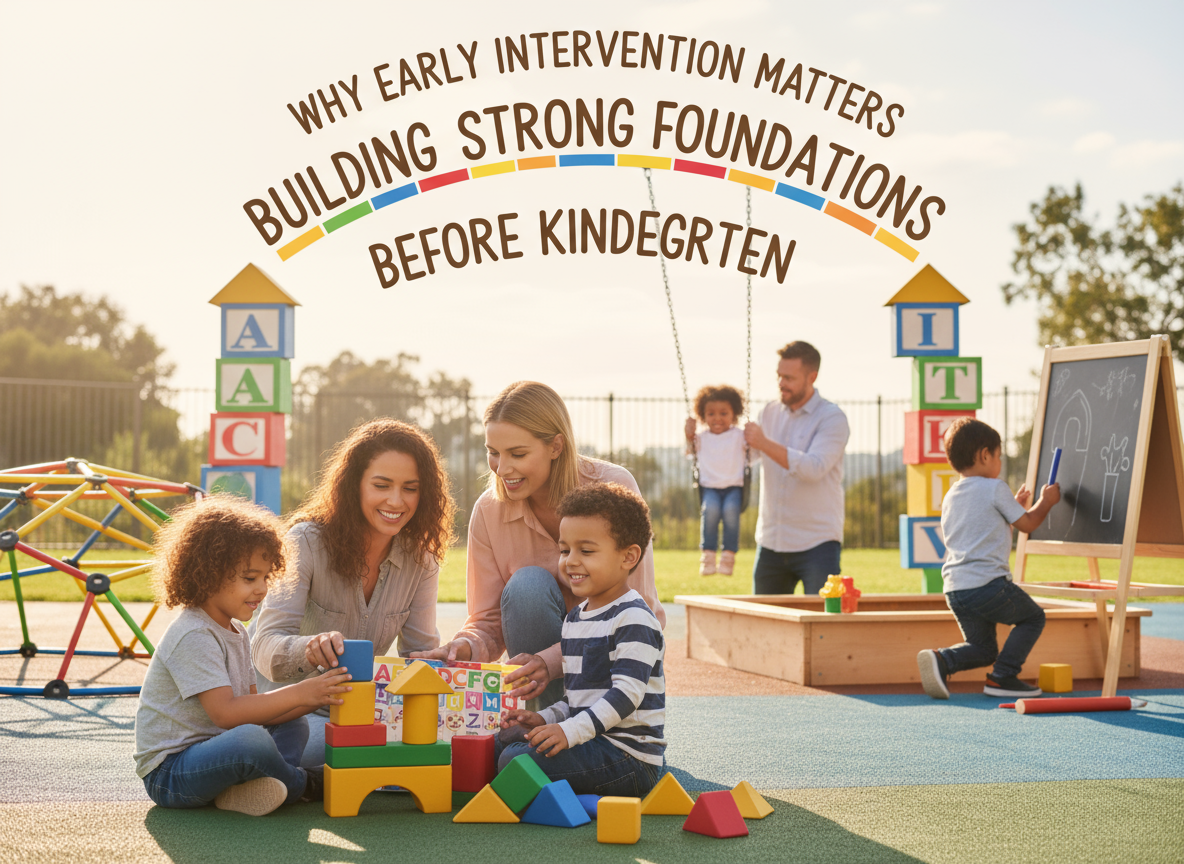
As the season of gratitude approaches, families often think about teaching young children to say “thank you” and express appreciation. For children with autism, learning gratitude may look a little different, and that’s okay! Teaching gratitude isn’t just about words; it’s about building understanding, connection, and awareness in ways that work for each child.
🌟 Why Gratitude Matters for Young Children
Gratitude is more than a polite phrase. It helps children:
Recognize the feelings of others
Build empathy and social awareness
Strengthen relationships with family, friends, and caregivers
Increase positive emotions and resilience
For children on the autism spectrum, expressing gratitude may require extra support, repetition, and visual cues, but the benefits are lasting.
🧩 Integrating Gratitude into Daily Routines
You don’t need a special moment to teach gratitude, it can be woven into everyday activities. Here are some strategies for children under 5:
1. Mealtime Moments
Use visual cues or a small gesture (like hands together) before eating.
Encourage saying “thank you” for food or help passing a dish.
2. Playtime Appreciation
Model sharing and taking turns, and celebrate when your child gives a toy or helps a friend.
Use praise to highlight their thoughtfulness (“You gave your toy to your friend, that was kind!”).
3. Family Routines
Incorporate gratitude into bedtime or morning routines: “What is one thing you liked about today?”
Use picture cards or social stories for children who benefit from visual supports.
4. Celebrating Effort, Not Just Words
Sometimes gratitude can be shown with a smile, hug, or gesture. Celebrate all forms of appreciation, not just verbal expressions.
👨👩👧 How ABA Therapy Supports Gratitude
ABA therapy can make learning gratitude structured and fun. Therapists use reinforcement, modeling, and visual supports to help children recognize when and how to express appreciation. Small, repeated practice in natural settings, home, school, or therapy sessions, can help these skills generalize over time.
Parents play a critical role by reinforcing the same behaviors at home and creating consistency across environments. This teamwork helps children truly understand and internalize the concept of gratitude.
💛 Gratitude Isn’t Perfect — It’s Progress
Remember, teaching gratitude is a journey. Some days your child may struggle to express thanks, and that’s okay! Even small steps, like making eye contact, sharing a toy, or responding to a gesture, are meaningful wins.
Focusing on thankful moments in everyday routines can help your child feel connected, valued, and capable. By weaving gratitude into daily life, you’re not only teaching social skills, you’re nurturing empathy, joy, and resilience that will last a lifetime.



